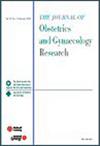Expression patterns of aquaporin 9 in umbilical cord and fetal membranes in women with pregestational and gestational diabetes
Abstract
Aim
Aquaporins (AQPs) play crucial roles in the fetal development process. We aimed to investigate the expression patterns of AQP-9 in the umbilical cord and fetal membranes in pregnancies complicated by gestational diabetes mellitus (GDM) and pregestational diabetes mellitus (PGDM) compared to normoglycemic pregnancies.
Methods
Samples of umbilical cord and fetal membranes were collected from women with GDM (n = 6), PGDM with nephropathy (White Class F) (n = 6). Histomorphologic evaluation was performed using hematoxylin–eosin staining. AQP-9 expression was analyzed by immunohistochemistry and quantitative real-time PCR (qPCR).
Results
Histologically, the GDM group showed increased umbilical cord diameter with edematous changes in Wharton's jelly, while the PGDM group exhibited decreased umbilical cord diameter. Immunohistochemical evaluation revealed significantly increased AQP-9 protein expression in vascular endothelium and amnion of both umbilical cord and fetal membranes in diabetic groups compared to controls, with the PGDM group showing the most intense immunoreactivity. qPCR demonstrated significantly decreased AQP-9 gene expression in umbilical cord of diabetic groups compared to controls (p = 0.026), while no significant differences in mRNA levels were found in fetal membranes between groups (p = 0.980).
Conclusion
AQP-9 exhibits significantly increased protein expression in both umbilical cord and fetal membranes of diabetic pregnancies, while mRNA levels are decreased only in the umbilical cord of diabetic patients with no changes in fetal membranes. This tissue-specific discrepancy between protein upregulation and gene expression suggests complex post-transcriptional regulatory mechanisms in diabetes-affected pregnancies, providing novel insights into the molecular pathophysiology of maternal-fetal complications in diabetes.




 求助内容:
求助内容: 应助结果提醒方式:
应助结果提醒方式:


